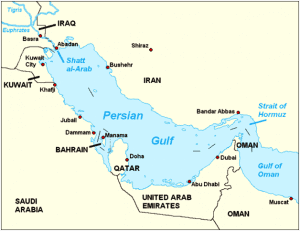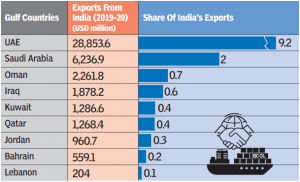TOP 5 TAKKAR NEWS OF THE DAY (29th DECEMBER 2022)
GOVERNANCE- SOCIAL ISSUES
1. INTEGRATED ROAD ACCIDENT DATABASE (IRAD) SYSTEM
TAGS:GS-II- GOVERNANCE- SOCIAL ISSUES
THE CONTEXT: Recently, the Ministry of Road Transport & Highways (MoRTH) released the Annual report ‘Road accidents in India 2021’
THE EXPLANATION:
- As per the report, there were 4,12,432 unfortunate incidences of road accidents during 2021 which claimed 1, 53,972 lives and caused injuries to 3, 84,448 persons.
- This report has been developed by reporting, management, claim processing and analysis of road accident data by using the Integrated Road Accident Database (iRAD) system.
What is iRAD?
- It is an initiative of the Ministry of Road Transport and Highways (MoRTH) and is funded by World Bank, to improve road safety in the country.
- This will facilitate road accident data collection by 4 stakeholder departments; Police, Transport, Highways and Health Departments.
- Through a collection of road accident data from all over the country, a road accident database will be developed. The collected data will be analysed using different data analytics techniques for the identification of accident-prone areas and the causes of the accidents.
- The analysis output will be represented in appropriate dashboards, access to higher authorities of stakeholder departments and MoRTH. And accordingly, a strategy will be formed for the reduction of the number of road accidents in India and to enhance road safety.
GOVERNMENT SCHEMES AND INITIATIVES IN NEWS
2. AMRIT BHARAT STATION SCHEME
TAGS: GS-II-GOVERNMENT INTERVENTIONS
THE CONTEXT: Ministry of Railways has recently formulated a new policy for modernization of stations named “Amrit Bharat Station” scheme.
THE EXPLANATION:
- Amrit Bharat Station scheme envisages development of stations on a continuous basis with a long term vision.
- The scheme will subsume all previous redevelopment projects where work is yet to begin.
- The scheme aims at preparation of Master Plans of the Railway stations and implementation of the Master Plan in phases to enhance the facilities including and beyond the Minimum Essential Amenities.
- However, plans and consequent budgets will only be approved on the basis of factors such as footfall and inputs from stakeholders. Zonal railways have been given the responsibility of selecting stations, which will then be approved by a committee of senior railway officials.
- The model envisages low-cost redevelopment of stations which can be executed timely.
- The scheme also aims to relocate redundant/old buildings in a cost efficient manner so that space is released for higher priority passenger related activities and future development may be carried out smoothly.
Facilities Planned under Amrit Bharat Station Scheme
- Provision for Roof Plaza to be created in future
- Free Wi-Fi, space for 5G mobile towers
- Smooth access by widening of roads, removal of unwanted structures, properly designed signages, dedicated pedestrian pathways, well planned parking areas, improved lighting etc.
- High level platforms (760-840 mm) at all stations with a length of 600 metres
- Special amenities for the disabled
INTERNAL SECURITY
3. ZELIANGRONG UNITED FRONT (ZUF)
TAGS:GS-III- INTERNAL SECURITY
THE CONTEXT: A tripartite agreement was signed by the Indian Government, Manipur Government and an insurgent group called Zeliangrong United Front (ZUF).
THE EXPLANATION:
What is Zeliangrong United Front (ZUF)?
- The Zeliangrong United Front is an insurgent group that was established in 2011.
- This Naga insurgent group is actively operating in Manipur, claiming to safeguard the interests of Zeliangrong Naga tribes in Manipur, Assam and Nagaland.
- Its objective is to create a ‘Zeliangrong’ state within the Indian territory, covering the Zeliangrong Naga tribe’s area in the three northeastern states.
- The ZUF is listed by the South Asia Terrorism Portal (SATP) as one of the 13 active insurgent groups in Manipur.
About the tripartite agreement
- The ‘Cessation of Operation’ Agreement was signed between the Central Government, Manipur government and the ZUF.
- Under this agreement, the insurgent group agreed to give up violence and join the democratic process.
- This peace agreement provides for the rehabilitation and re-settlement of the armed cadres belonging to the ZUF.
- A joint monitoring group will be set up to oversee the implementation of the agreement.
- This agreement is a major step towards the government’s aspiration of an insurgency-free Northeast India.
About Zeliangrong people
- Zeliangrong people are one of the major indigenous Naga communities living in the tri-junction region of Nagaland, Manipur and Assam. The name “Zeliangrong” combines the Zeme, Liangmai and Rongmei Naga tribes. This tribe belongs to a larger Southern Mongoloid population. Its language belongs to the Sino-Tibetan family of languages.
Which are the other key insurgent groups operating in Manipur?
Some of the major insurgent groups operating in the northeastern state of Manipur are Kangleipak Communist Party (KCP), United National Liberation Front (UNLF), People’s Liberation Army (PLA), People’s Revolutionary Party of Kangleipak (PREPAK), National Socialist Council of Nagaland – Khaplang (NSCN-K), Manipur People’s Liberation Front (MPLF), Kuki National Front (KNF), and Kuki National Liberation Front (KNLF).
ECONOMIC DEVELOPMENTS- INFRASTRUCTURE
4. MANGDECHHU HYDROELECTRIC POWER PROJECT
TAGS: PRELIMS PERSPECTIVE-GS-III- INFRASTRUCTURE
THE CONTEXT: The 720 Megawatts Mangdechhu Hydroelectric Power Project, which was implemented with the assistance from India, was recently handed over to the Druk Green Power Corporation (DGPC) in Bhutan. With this handing over, the two countries have successfully completed four mega hydroelectric power projects.
THE EXPLANATION:
What is Mangdechhu Hydroelectric Power Project?
- The 720 MW project Mangdechhu Hydroelectric Power Project was jointly inaugurated by Indian Prime Minister Narendra Modi and his Bhutanese counterpart Lotay Tshering in 2019.
- The Indian Government provided the financial and technical assistance for the construction of this hydroelectric project.
- The commissioning of this hydroelectric power project has increased the electrical power generation capacity of Bhutan by 44 per cent and it is currently at 2,326 Mega Watts.
- The project has generated more than 9,000 million units of energy since the commissioning, bringing down 2.4 million tonnes of carbon emissions each year.
- This is significant, given that the hydropower sector is expected to contribute to Bhutan’s economic growth and development based on the philosophy of Gross National Happiness.
- The project had increased the country’s hydropower revenue by 31 per cent in 2020. It exported electricity worth Rs.12.13 billion to India in 2021. This has increased Bhutan’s electricity exports to Rs.24.43 billion.
- The project received Brunel Medal 2020 from the Institute of Civil Engineers, London. It was recognized for its excellence in civil engineering and its social and environmental credentials.
India-Bhutan hydropower relations
- The bilateral hydropower cooperation began in 1961 when the Jaldhaka agreement was signed. The Jaldhaka project is situated in West Bengal, with the hydropower generated from the plant being exported to southern Bhutan.
- Bhutan’s first mega power project – 336 MW Chukha Hydropower Project (CHP) – was fully funded by the Indian Government. The success of this project paved the way several other mega hydropower projects in Bhutan.
REPORTS & INDEXES
5. CITY FINANCE RANKINGS, 2022
TAGS: GS-III-INFRASTRUCTURE- REPORTS & INDEXES
THE CONTEXT: Recently, the Ministry of Housing & Urban Affairs launched this City Finance Rankings, 2022 to evaluate, recognize and reward India’s Urban Local Bodies.
THE EXPLANATION:
- The rankings aim to motivate city/state officials and decision-makers, to implement municipal finance reforms.
- The participating ULBs will be evaluated on 15 indicators across three key municipal finance assessment parameters, namely:
o Resource Mobilization
o Expenditure Performance
o Fiscal Governance. - The cities will be ranked at the national level based on their scores under any one of the following four population categories:
o Above 4 million
o Between 1-4 million
o 100K to 1 million
o Less than 100,000 - The top 3 cities in each population category will be recognized and rewarded at the national level as well as within each state/state cluster.
Significance of the ranking:
- City Finance Rankings are an effort to analyse and help the ULBs in identifying areas in their financial performance where they can make further improvements, to be able to deliver quality infrastructure and services to its citizens.
- The rankings will serve as a constant motivation for city/state officials to continue to implement municipal finance reforms.
- At a state- and national level, the rankings will highlight the outcomes achieved by municipalities and provide critical insights to key policymakers into the state of finances of urban local bodies.

